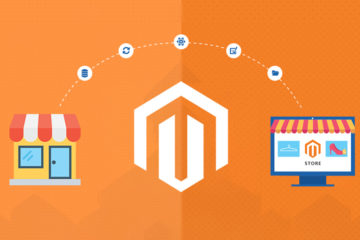Are you considering to launch a new online store or switching the existing one to…
Businesses are keen to adopt the latest commerce channels and technologies to get closer to their shoppers and increase conversions. And in order to achieve this effectively, they need to overcome four main challenges:
- Requiring to continually innovate their digital customer experience.
- Creating coherent experiences over various touchpoints and technologies.
- Reducing data silos to secure data and make real-time decisions.
- Merging new technologies while reducing interruptions to current business procedures.
In order to accomplish the aforementioned, several companies are shifting towards “headless commerce.” It will accommodate an infinite diversity of web, mobile, IoT, social, and in-store digital touchpoints while distributing them structurally from the commerce platform applying APIs to provide trade services. Using headless commerce enhances flexibility to control a wide range of omnichannel scenarios.
Last week, Adobe Commerce Cloud announced a robust and extremely flexible infrastructure that offers constant integration and continuous delivery (CI/CD) processes. It will empower consumers to achieve fast and rapid iterations of their codebase. Now traders of all sizes can use new features to respond to growing customer needs.
Each API (application programming interface) client is different. Having distinct designs of APIs for various clients results in improved performance, ease of development, and the cohesion of integrations. REST and GraphQL are the two one-of-a-kind set of APIs offered by Adobe Commerce Cloud. Both are popular platform extensibility and “microservice layer” technologies. It grants retailers to instantly embrace APIs for all the various touchpoints and integration scenarios they may encounter. Besides these new enhancements, businesses of every size can power the broadest range of omnichannel trade situations to create innovative experiences that will stimulate the loyalty of the customer and increase revenue.
BETTER MOBILE EXPERIENCES
According to Adobe Analytics, the holiday season of 2018 observed 51.4% of visits from smartphones. However, the revenue that was recorded from mobile phones was 31.0%
only. Progressive Web Apps (PWAs) represent the subsequent growth in mobile-driven commerce. PWAs give rich local app experiences right through mobile browsers. Moreover, to provide headless APIs for maintaining PWAs, Adobe Commerce Cloud gives PWA Studio. In this way, user-experience developers can concentrate on creating best-in-class experiences.
SEAMLESS INTEGRATIONS
Multiple brands prefer headless commerce to integrate business with omnichannel applications or CMS. Service-oriented methods backed by microservices makes it simpler and faster to merge with different systems like marketing, store systems, and loyalty plans. Adobe Commerce Cloud is pre-integrated with the best-in-class Adobe Experience Manager, which is outlined to carry overall delivery experience, hybrid designs that split experience delivery in CMS and Commerce, or completely headless scenarios. Also, companies can take advantage of headless commerce integrations for digital signage, POS, and social-conversational commerce.
Tap deep insights and real-time decisions
A general difficulty with headless deployments is enhancing experiences and delivery performance. Adobe Sensei is the machine learning technology of the company that is deeply embedded within Adobe Experience Cloud solutions. It helps API-based personalization along with enhancing performance and ranking of the page. By incorporating A/B testing in the development phase of single-page apps, brands can introduce new innovations and check customer-facing errors in production conditions.
Power of robust global ecosystem
Headless commerce needs a unique range of design and integration across systems which can be frightening for all but the largest companies. Assuring robust developer tools and a harmonious partner ecosystem to increase core skills is necessary for efficient deployment and continued success.
The future of headless commerce
With the advanced capabilities of Adobe Commerce Cloud headless, businesses have endless flexibility to produce seamless omnichannel experiences supporting every scenario. From working in a fully headless mode, employing services architecture, a system front-end, and PWAs to merging with consumer engagement apps such as CMS and beyond. These improved capabilities put unprecedented power in merchants’ hands to create every experience shop-worthy for customers and stimulate innovation. Magento Commerce Pro sponsored by Adobe Commerce Cloud gives a clear competitive edge to meet the demands of consumers, just as those demands continue to grow.










Leave a Reply